2015 Marin Attack Trail C-XT9
(discontinued)
| Where To Buy | |||
|---|---|---|---|
Free shipping on orders over $50 (continental U.S. only).
International shipping available. Some exclusions apply. |
|||
Free shipping on orders over $50 (continental U.S. only).
International shipping available. Some exclusions apply. |
|||
Reviewed by Steve Wentz and Brandon Turman // Photos by Lear Miller
Marin has made the Attack Trail for quite few years now, and refinements and different component choices continue to improve the ride. Model year 2014 marked a major rebirth for the brand and the bike, which now sports a drastically updated design and full carbon frame purpose built for Enduro glory.
The last time we rode the a Marin (the Mount Vision) was back at our 2014 Test Sessions in Sedona, and what a difference a year makes. This year's test bike differs in that the 2015 Attack Trail costs $2K less, has 10mm more travel, a degree slacker head tube, similar chainstay length and bottom bracket height. The weight is a pound more than our previous test model as well. Would the more aggressive geometry and different model suit us more than before? Given the intended nature of the bike, we headed to some of the roughest and fastest trails we could find to get a feel for the Attack Trail C-XT9.

Highlights
- Carbon frame
- 27.5-inch wheels
- 150mm (5.9-inches) of rear wheel travel // 160mm (6.3-inches) front
- Tapered head tube
- 66.5-degree head angle
- 73.5-degree effective seat tube angle
- 333mm (13.1-inch) measured bottom bracket height
- 435mm (17.1-inch) chainstays
- Threaded bottom bracket
- 142mm rear spacing with 12mm through axle
- Measured complete weight (size Large, no pedals): 28-pounds, 6-ounces (12.9kg)
- $6,499 MSRP
Marin has been refining their Quad-Link suspension system for a while now, giving it a more and more refined ride as the years progress. Now in it's third version, Quad-Link uses two short links to create an Instantaneous Pivot Center (aka virtual pivot). Marin says the design effectively separates pedal and brake forces from terrain inputs. On the Attack Trail the system is designed to provide a very progressive 150mm of travel - a trait we'll discuss in depth later in this review.

Sealed cartridge Enduro Max Black Oxide bearings are used in major pivot locations. The bearings have more balls and a larger diameter than used in prior Marin bikes, in addition to a generous lifetime warranty.
The frame's one-piece carbon fiber monocoque front end certainly doesn't look fragile, although the bare, blank, flat surfaces don't make us drool with desire either. We like the robust look of the back end of the bike, with a wide top link and plenty of carbon surface area in the swingarm to keep everything stout.
Full internal cable routing enters through the headtube. If you'd prefer to go external with your cables, they can be routed through the custom-molded “FRS Rock Shield” on the downtube that also protects the frame from impacts. Additional mounts are available under the top tube. Internal routing for the dropper post cleans things up nicely. This internal system is prone to cable rattling, however, so you may find yourself crafting methods to silence the bike further.

Small details include a thick rubber chainstay guard, a water seal on the seatpost clamp, bottle mount inside the front triangle, threaded bottom bracket, chainstay mounted disc brake, and torx pivot hardware. There’s a modular bottom bracket interface that allows the use of ISCG05 tabs or a chain drop backplate for either a double or triple crankset. It also has a high direct front derailleur mount and comes with an upper guide bolted to the mount for added chain security. Mud clearance is a little tight with just 5mm of room with the stock 2.35-inch Schwalbe tire.
Component updates from 2014 to 2015 include a 1X drivetrain with an upper guide, wider bars, and slightly shorter stem - all things we love.
In addition to the $6,499 carbon XT9 model we tested, Marin offers the Attack Trail in two aluminum models priced at $3,899 and $2,699, giving you a wide variety of spec options. Looking to build one from scratch? A carbon frame and FOX Float X CTD shock package is also available for $3,000.
On The Trail
We'll preface this section with the fact that we had to test this bike twice as a result of a mis-spec'd component, hence the review's delay. Our first test bike featured a RockShox Monarch RC3 shock, and we later threw a leg over one with a Monarch Plus RC3. There's a chance you'll find both versions in the wild, though most will include the Monarch Plus. Ride qualities were surprisingly similar. Test locations included the rough and rocky West Cuesta Ridge in San Luis Obispo, California, followed by Laguna Beach's popular Telonix and Canyon Acres downhill trails for a followup.
Every bike is the sum of its parts, not just the numbers on a spreadsheet. While the Attack Trail looks like it would be an absolute fiend on the trails according to the specs (150mm travel, 66.5-degree head angle, 435mm chainstays, and 333mm bottom bracket height), we didn't feel the flow right away. Thus begins our story of finding this bike's sweet spot...
Marin's sizing is certainly on the smaller/shorter end of the spectrum, so consider sizing up to get a healthy reach measurement. The cockpit comes equipped with Easton's 70mm Haven stem and 760mm wide bars, though we'd gladly trade the extra stem length for a longer front center, which is why at 5'8" and 5'10" tall we chose to ride a size Large bike (425mm reach) versus our typical Medium sizing. With the shorter stem in place, the cockpit was very comfortable, and we felt right at home distance wise.

We initially set the bike up with Marin's suggested 25% rear sag and the RockShox Pike RC Dual Position Air fork to a middle-of-the-road recommended pressure setting for both of our 175-pound test riders. When we pointed the Attack Trail downhill, we discovered just how important setup was. At these pressures the bike seemed to work best in situations where pumping the terrain was to our benefit. Pushing into turns and rollers resulted in a positive, quick response and a burst of speed. When smashing into turns or landing a drop it was stable as well. We experienced no odd kicks of any variety, even when landing in rocky piles, and the suspension action was quite smooth thanks to the upgraded DebonAir can.
So what's the catch? Our initial hesitation had to do with the bike's tendency to ride really high in the rear travel. While descending with comfortable rebound settings and open shock compression, we felt as if bumps were not absorbed very well and the bike wasn't very planted. As a result our weight would get pushed over the front end more than you typically want to be, especially on steep, rocky terrain. While it never threw us offline, it wasn't super confidence inspiring due to over the front feel, even with a few spacers under the stem. This tendency made us feel like the head angle was steeper than it actually is. We couldn't quite believe this feeling was coming from a 150mm travel bike. It just shouldn't have felt that way, especially with such awesome modern suspension handling damping duties.
Unable to use all the travel even on large drops to relatively flat landings, we dropped the rear shock pressure in stages all the way down to 35% sag, which helped a good amount. The resulting ride was smoother through those rough sections we initially had trouble with, creating a more balanced, even feel in the suspension with the fork set to the recommended pressure for our weight. We felt more comfortable on the trail and appreciated the bike's new ability to sit lower in corners as well. We were now able to use all the travel without a harsh bottom-out feeling, but somehow it still lacked that deep, plush, super confidence inspiring feel. Instead it rewarded a very active rider wanting to boing around the trail, pumping every depression along the way rather than just ploughing through the rough.
We came back to the numbers after a few rides, puzzled that such a capable bike on paper was just feeling "alright" out on the trails. Yes, we were able to tune away the feeling of hanging up on bumps and being over the front with more rear end sag. Yes, it was better in corners and didn't feel as tall in the back end. But it still wasn't a great ride, and it ended up being a matter of the suspension curve - the Attack Trail has the most progressive curve of any bike we've tested in recent memory.
Lots of manufacturers rely on an air shock's inherent ability to become progressive at the end of the stroke to control bottom-out characteristics. Sometimes that works well, and sometimes that doesn't work well. In this case, the combination of a progressive mechanical system and an air shock meant the bike needed much more sag to allow us to cycle through the suspension and use all 150mm of travel. Could the bike ride better with a coil shock or high volume air shock? You bet, it's a perfect candidate for one.

With both the Monarch and Monarch Plus installed, our repeat tests revealed that at 25% sag the bike can be a handful. At 30% sag the bike has a very light feel to it, providing a more efficient, XC/Trail-style ride due to system's extreme progression. At 36-38% sag the bike finally comes alive and is able to go head to head with others in the 150mm class. Deeper into the stroke we found a good balance between traction, usable travel, bottom-out support, and a more inspiring ride. We don't see this need for extra sag as a positive or negative trait. It's just the way the bike works and something to be aware of. Some may like this, and some may not. Once we were happy with the performance of the rear suspension, the Attack Trail was quite a bit of fun to ride. It didn't inspire us in the same ways other leading enduro bikes do, but at the limit we were never treated badly. It's quite possible that this is actually a very good trait, as some bikes that inspire confidence don't take care of the rider at the limit and can lead to truly bad situations.
Aiding in the bike's ability to handle well was the frame's superb stiffness. Those boxy areas really help the back end stay put, and pumping out of corners and through twisty sections was only met with forward movement. Pressing hard on the pedals resulted a quick response, as the bike didn't wallow in the travel or flex much. It goes to show you, never judge a book by its cover. What we thought at first felt like a relatively steep, non-forgiving frame turned out to be one of the better bikes for jumping, pumping and generally having fun on, provided you're precise with your inputs.
The high feeling of our initial setup really hindered our ability to get the front end off the ground, though this improved with our final setup. The Attack Trail does manual or pick up over obstacles when asked, but it's less forgiving than others. Where some frame designs let you push through more suspension to compensate/overcompensate while manualing over water bars or obstacles, the Attack Trail highlights whatever the rider does, for better or worse.
After all this time on the Marin, we couldn't help but wonder where the bike would excel, and who it would be best for. Our first consensus was that the bike should not be for those in search of steeper descents. The relatively linear feeling of the fork compared to the rear suspension did not impart much confidence when we were really pointed downhill, but on flatter terrain and swooping trails we could generate more speed working with the rear suspension, not fighting it. So, for those riders out there who are coming off of shorter travel bikes or more endurance based rides, the Marin could be a great choice. The responsive frame and nimble suspension could make a rider feel more at home compared to suspension systems that use more travel more of the time, and the stiff back end of the frame would really impart a feeling of efficiency. We feel the main downside of the suspension (multiple medium-large hits in a row) would not be that big of a deal for those riders who prefer to pick their lines around the bumps and smooth out the trail that way.

So what impact does the need for extra sag have on the rest of the ride? While climbing steep terrain the Pike RC Dual Position Air's 30mm travel adjust feature becomes more necessary. This helps keep the front end on the ground, though it lowers an already low bottom bracket. This presents an interesting issue, as the progressive feel of the back end would be better paired with a fork compatible with RockShox's Bottomless Tokens (and travel adjust models aren't). The ability to add up to four Bottomless Tokens would drastically improve the balance front to rear on the bike, and also keep the front end higher in the travel through steeper parts of trail.
Surprisingly, even with that much sag the bike still feels very light on the trail, no doubt aided by its respectable 28.4-pound weight. Marin was smart and put weight in places where it matters. The tires were sturdy enough to not give us any flats the entire time we rode the bike, but the slight weight of those casings was offset by the light DT Swiss M1700 wheelset. A wise choice that strikes the balance between durable and sprint-friendly.
The last part of the equation that makes the Attack Trail feel light is the pedaling response. The bike moves forward in a hurry when called upon, regardless of the 1X gear combination and without the need for any on-the-fly compression levers. As we have noted with other bikes, though, there is a downside to this anti-squat feature. When seated and smoothly pedaling over washboard sections, potholes, and general mayhem along the trails, the suspension movement can momentarily interrupt you pedal stroke. Given that we believe this bike to be a perfect step up for many who have owned hardtails or short travel bikes previously, we don't think this is a problem. The benefit of efficient sprinting and good power delivery would outweigh the small hiccups in rough terrain feedback.
Of course, the bike's head angle, seat angle, chainstay length, bottom bracket height, and other factors play a vital role in determining how a bike will ascend. Marin stuck a nice balance here, and we'd rate the bike pretty well on the climbing scale as spec'd.
Build Kit
The overall parts package on the Attack Trail C-XT9 is about what we have come to expect at this price range. Once you jump into the carbon frame world, you're usually looking at about $4K for a base model. At $6,499, the C-XT9 edition comes with many parts that could be on all but the most discerning riders' wish lists. The SRAM X01 drivetrain, RockShox's newest suspension offerings, and a lightweight DT Swiss M1700 wheelset highlight a well rounded component group.

While the stock damping is pretty good on the Pike RC fork, we have been spoiled recently with the ability to adjust almost any suspension component, fueling our desire for the more tunable RCT3 model. This is in addition to the conflict of interest with the Dual Position Air feature.
SRAM's new Guide RS brakes were fade free and provided easy to adjust ergonomics. Power was very good, and the consistency was welcomed, especially considering the hiccups we had with Avid brakes of old. The bike comes stock with a 180mm rotor up front and 160mm out back.
The DT Swiss M1700 wheelset is light and provided decent engagement. While this isn't DT's fastest available ratchet, the M1700 could be easily upgraded if a rider wanted a lightning quick response. The spokes are not proprietary, and the wheels are tensioned in a traditional fashion. We like those features on a bike that is meant to be ridden, jumped, crashed, and treated like a bike should be. The hoops were still in great shape at the conclusion of our test.
The KS Lev Integra seatpost worked well throughout the test, and internal routing allowed for clean lines and no worries of snagging a cable when the bike went in a stand. The new Southpaw Lever also fits nicely under the left brake, which is exactly where our minds want the dropper post remote to be when running a 1X system.
Marin's choice of 2.35-inch Schwalbe Hans Dampf TrailStar Evolution tires proved to be a good one when the terrain was predictable. On looser terrain, though, the tires tended to slide more than we felt they should coming into corners with debris and rocks strewn about. We would prefer a front tire with more absolute grip, or even just a slightly grippier front tire, and we would give up a little bit of rolling resistance for it.
SRAM's 1x11 X01 drivetrain worked very well, providing near frictionless, consistence performance. Unlike most X01 equipped bikes we noticed a lot of chain slap, however, especially in harder gears. This is likely due to the lower drop style chainstay design. Taking a link out of the stock chain could help this problem, as could some mastic tape in select locations inside the seatstay and on the chainstay.
Long Term Durability
We are happy to say that the Attack Trail seems to be pretty much void of potential long term issues. It was sturdy, stiff, responsive, and nothing came loose. The only area of concern is the exceedingly small bearing spacing on the lower pivot points, which was likely done to accommodate up to three chainrings up front. Larger spacing on bearings usually leads to a more stout frame and longer bearing life, but only time can tell. Marin backs the complete bike with a one year warranty, carbon frame for five years, and pivot bearings/bushings for lifetime.

What's The Bottom Line?
The Marin Attack Trail is more of a Jekyll and Hyde type of bike than we thought it would be. Set it up as suggested and it will motor up any climb and provide a very quick, snappy ride that some riders will love, but will leave others questioning its capability. Set it up with much more sag and the bike gobbles up bumps better and provides a thrilling, responsive ride that does pretty well in rough terrain. There isn't much middle ground unfortunately, so the choice is yours. Do you prefer the doctor's way or the monster that needs to be run ragged? Due to the extremely progressive suspension design, the importance of proper setup and understanding what you really want out of a bike is clearly evident with this model. Regardless of your choice, the bike's stiff and spritely nature rewards an active and precise rider who is in control of his bike at all times, not the other way around.
Visit www.marinbikes.com for more details.
Bonus Gallery: 15 photos of the 2015 Marin Attack Trail C-XT9 up close and in action
About The Reviewers
Steve Wentz - A man of many talents, Steve got his start in downhilling at a young age. He has been riding for over 18 years, 11 of which have been in the Pro ranks. Asked to describe his riding style he said, "I like to smooth out the trail myself." Today he builds some of the best trails in the world (and eats lots of M&M's).
Brandon Turman - Brandon likes to pop off the little bonus lines on the sides of the trail, get aggressive when he's in tune with a bike and talk tech. In 15 years of riding he worked his way through the Collegiate downhill ranks to the Pro level. Formerly a Mechanical Engineer, nowadays he's Vital MTB's resident product guy.

About Test Sessions
Three years ago Vital MTB set out to bring you the most honest, unbiased reviews you'll find anywhere. That tradition continues today as we ride 2015's most exciting trail, all-mountain, and enduro bikes in San Luis Obispo, California. Reviews can be accessed 24/7 in our Product Guide. Test Sessions was made possible with the help of Foothill Cyclery. Tester gear provided by Five Ten, Race Face, Easton, Troy Lee Designs, Club Ride, Kali, Royal, Smith, Pearl Izumi, and Source.
Specifications
| Where To Buy | |||
|---|---|---|---|
Free shipping on orders over $50 (continental U.S. only).
International shipping available. Some exclusions apply. |
|||
Free shipping on orders over $50 (continental U.S. only).
International shipping available. Some exclusions apply. |
|||






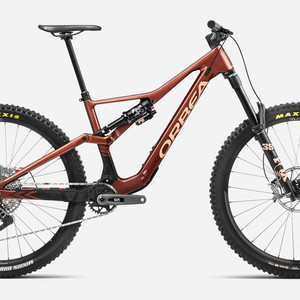

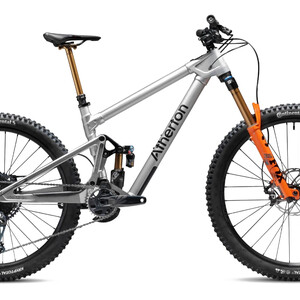

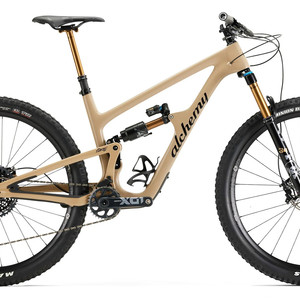
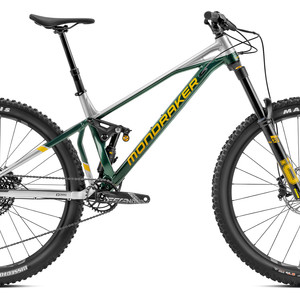
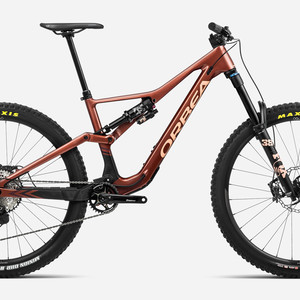
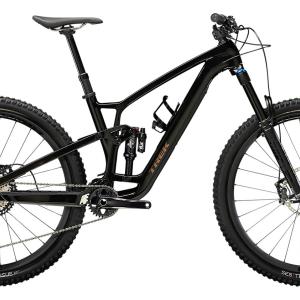







0 comments
Post a reply to: 2015 Test Sessions: Marin Attack Trail C-XT9